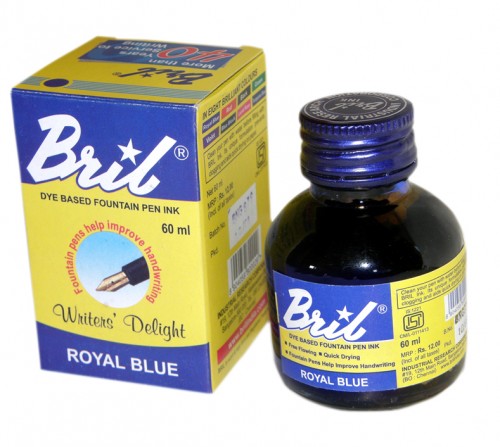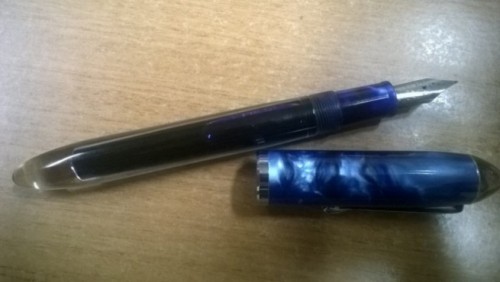By Jayaram Rajaram
Over the years, there have been many debates on whether children should use fountain pens or not, when they transition from pencil usage. Many parents have asked me this question and I realized my answers were average at best. So I decided to get my hands dirty and do some research and educate myself and parents who wish to do what’s best for their children.
When I started speaking to parents and teachers I realized that there are distinctly two schools of thought. Some people who are pro-fountain pens claim it helps improve handwriting and others seem to say ball-pens, micro-tips and gel pens work just fine in this day and age of advanced writing technology. Of late some educators and parents have completely discounted the importance of handwriting in the age of technology. Now who is right?
 We have been in the fountain pen ink, fountain pen, ball pens, stationery, early-childhood education products and other baby & children’s products space for over 50-years now. More importantly we have been in the business to Make Living Fun for children and parents over the years. We decided that we must research and give our readers and customers authentic information so they take informed decisions that will help in overall development of their children. Over the years, we have been following some research globally, spoken to handwriting experts and have also studied various developmental aspects that are beneficial to children and adolescents.
We have been in the fountain pen ink, fountain pen, ball pens, stationery, early-childhood education products and other baby & children’s products space for over 50-years now. More importantly we have been in the business to Make Living Fun for children and parents over the years. We decided that we must research and give our readers and customers authentic information so they take informed decisions that will help in overall development of their children. Over the years, we have been following some research globally, spoken to handwriting experts and have also studied various developmental aspects that are beneficial to children and adolescents.
 This research has made us come to the conclusion that the use of traditional nib-based fountain pens with high-quality dye based ink is absolutely essential for children transitioning from pencils to pen usage.
This research has made us come to the conclusion that the use of traditional nib-based fountain pens with high-quality dye based ink is absolutely essential for children transitioning from pencils to pen usage.
Following are the reasons why you should definitely start your children off on fountain pens and not ball pens, gel pens or micro tips, from around 10 years of age (Std. / Grade 5) to at least 16 years (Std. Grade 10):
- Traditional fountain pens with high-quality nibs allow children to hold the pen in the correct position. This ensures least pressure on a child’s hand and brings about awareness of grip leading to stability of writing in the long run.
- Holding the pen in one position becomes essential as the flow of ink is optimum (due to abrasion of Nib) in the position used most often by the child. This brings about discipline of grip and makes writing a conscious effort leading to fine motor skills and brain development.
- Good fountain pen ink is less viscous than other inks and offers the best flow under least pressure. Writing for long durations with a fountain pen is much easier than using ball pens and even gel pens.
- Handwriting experts and graphologists advocate the importance of handwriting and its link to overall character and personality of a human-being. While there is no direct evidence that fountain pens improve handwriting, we know for sure that it brings about conscious writing and offers the best stability-flow balance for children to develop one stable way to write over the years. While an improvement in handwriting is subjective, fountain pens by-and-large make the written word look more beautiful if children are trained properly to use them. Did you ever wonder why calligraphy pens have fountain-pen-like Nibs? It’s not a coincidence you know.
- Fine motor skills improve. Today the Montessori method of teaching emphasizes the need to write on sand, use chalk etc. among young kids. Similarly children benefit greatly from the mindfulness that is required while using fountain pens, and also from the slight friction when the nib touches paper if they happen to change their grip (knowingly or unknowingly).
- Learning to write with a fountain pen takes practice and this helps children become more patient, write slower and work on this very important life-skill constantly as they go through school. Patience is a virtue that is quickly disappearing in a world of instant-gratification. Research shows delayed gratification during childhood has a direct correlation with success and happiness in adult life.
- Handwriting that is stable and legible will help children communicate what they learn and know to the world better, with ease and confidence. Simply put legible handwriting helps even smart children score more in exams. Fountain pens definitely make children write with more self-awareness, confidence and take pride in their writing. Self-awareness and enjoying one’s work are by-far the most important aspects of education and long-term success in any field.
- Conscious, mindful writing happens best with a fountain pen and this reduces mistakes and scratching. Laying an emphasis on the process and slowly improving the outcome is more important than ever today, as children grow up with Delete, Backspace, Whatsapps and Snapchats today. We love technology, and children learn a lot from it, but let us not nurture a generation that only believes in things that gratify instantly and mindless, grammatically incorrect modes of communication.
- It’s more Economical and Environment Friendly! While fountain pens for students cost more than the cheap ball point pens and gel pens, they last for years. One bottle of 60 ml ink lasts anywhere between 6 months and one year. So a small investment takes you a long way and saves families a fair bit of money. Moreover fountain pens are not use-and-throw, so children are forced to keep them carefully and indirectly help in saving the environment. A subtle lesson in valuing what they have and also not contributing to more plastic waste by disposing ball point pens and refills maybe?
- It’s Fun! Don’t we all remember swishing and splashing ink on our friends’ shirts using our fountain pens? Anything that aids in playing a fun prank will never go out of fashion with kids! Now if that doesn’t Make Living Fun what will? Worried about the ink-smeared clothes? My friends at surf have a good solution for you 😉
Never forget that handwriting is a person’s unique identity and this needs to be nurtured with care and not treated as frivolously as typing. Even the beautiful fonts in our iPads and computers were created by artists who studied calligraphy (Steve Jobs too was inspired by meditation and a calligraphy course he took). There is no substitute to learning an art form, as art is food for the soul and hence if we are to avoid drastic evolutionary rewiring, introduce your children to fountain pens in their formative years (i.e. when their school asks them to transition from pencil to pen or from 10 years of age if you are home-schooling your child).
While we were at it, we realized that over the last 5-6 years, several schools in Europe have gone back to making fountain pens compulsory. While embracing the latest gadgets is important, let us not do away with timeless know-how and make our children use traditional fountain pens at least for a few years from the year they transition from pencils to pens.
You can now buy Bril Inks Online at www.brilindia.com
About the Author
Jayaram Rajaram is the Managing Partner of Bril and the Managing Director & Chief Dreamer of ELSA. Jayaram writes from his heart and from experience. He writes about varied topics ranging from parenting to leadership and entrepreneurship.
To get updates on Bril, parenting tips and Jayaram’s blog posts become Bril’s fan on www.facebook.com/brilconnect
For more information on Bril and ELSA please visit